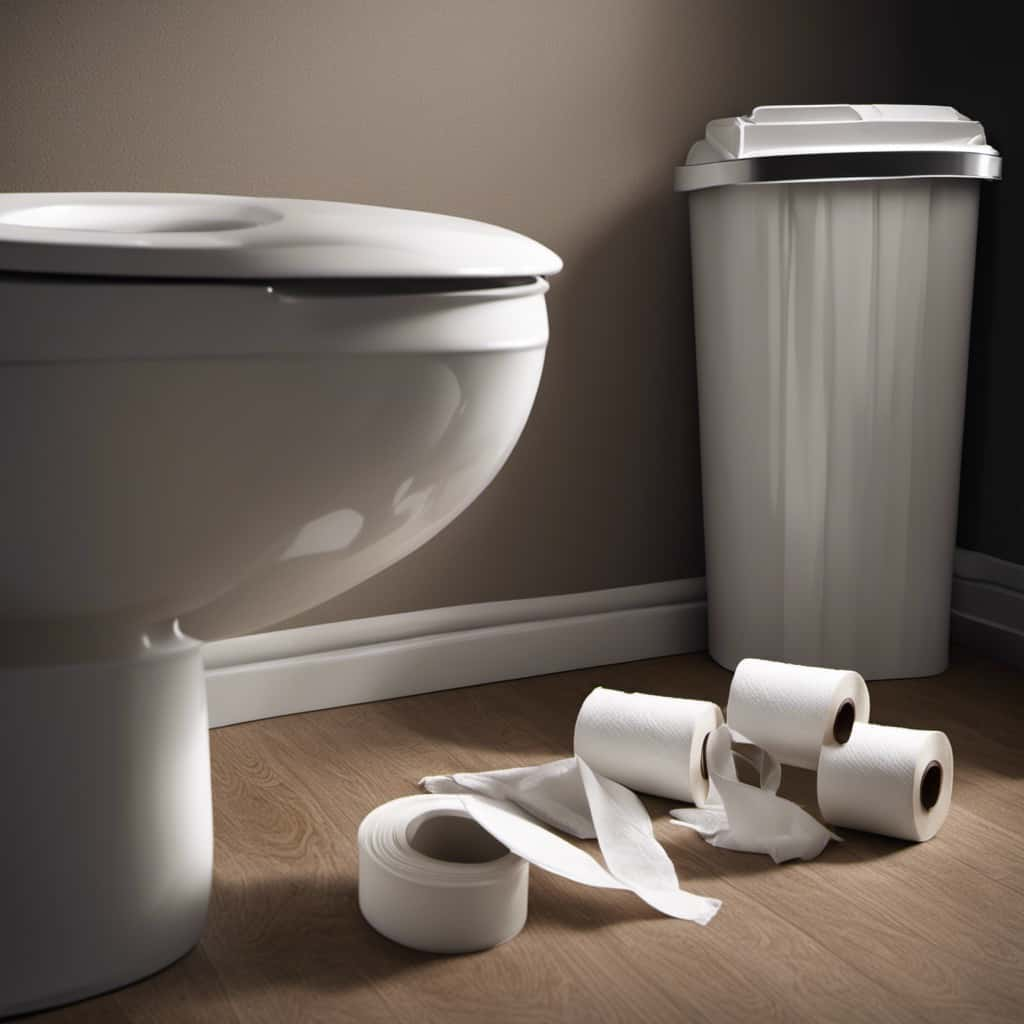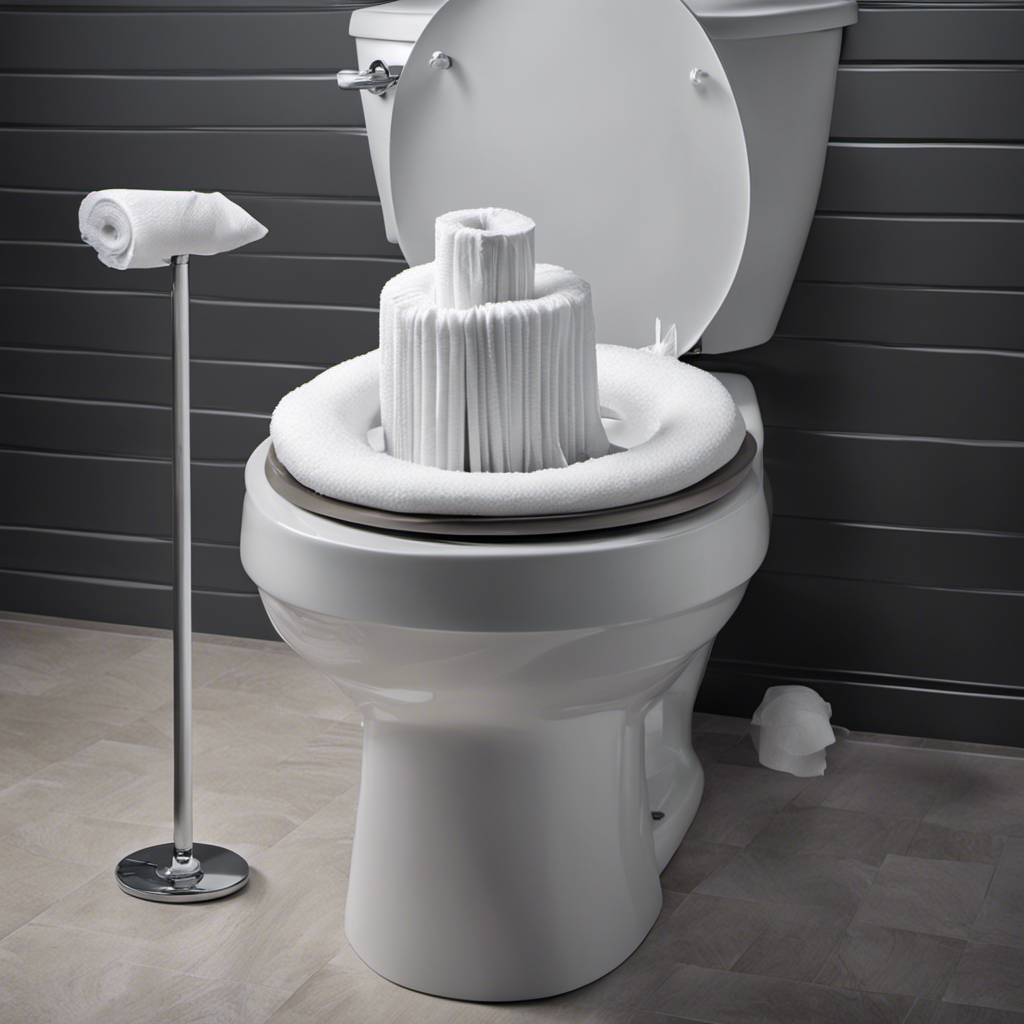Have you ever wondered where the water goes when you flush the toilet?
Well, let us take you on a journey through the intricate process of wastewater treatment.
From your toilet to the sewer, we will explore the steps involved in treating and purifying the water.
Follow us as we uncover the fascinating world of primary and secondary treatment, as well as the final steps of disinfection and returning the water back into the environment.

Get ready for a detailed and informative adventure!
Key Takeaways
- Responsible toilet usage and maintenance are important to minimize water waste, conserve resources, prevent clogs, and protect waterways from pollution.
- The wastewater treatment plant has a series of processes to ensure safe and environmentally responsible treatment of wastewater, including screening, primary treatment, and secondary treatment.
- Primary treatment involves removing large solids and debris from flushed water through filtration and the use of equipment like grit chambers and sedimentation tanks.
- Secondary treatment involves breaking down organic matter through biological and chemical processes, ensuring that water released back into the environment is free from contaminants.
The Journey Begins: From Your Toilet to the Sewer
When we flush the toilet, the water immediately rushes down the drain and enters the sewer system.
Proper toilet maintenance is crucial for ensuring the smooth flow of wastewater and preventing potential environmental impacts.
Regular inspection and repair of leaky pipes, faucets, and toilets can minimize water waste and conserve resources.

By avoiding flushing items such as wipes, feminine hygiene products, and medications, we can prevent clogs in the sewer system and protect our waterways from pollution.
Improper wastewater disposal can lead to the release of harmful chemicals and bacteria into our rivers, lakes, and oceans, posing a threat to aquatic life and human health.
It’s essential to understand the importance of responsible toilet usage and the need for proper maintenance to minimize the environmental impacts of wastewater disposal.
As the water begins its journey from our toilets to the sewer system, it carries with it the responsibility to protect our environment.

This responsibility continues as the wastewater arrives at the wastewater treatment plant.
Arriving at the Wastewater Treatment Plant
Upon arrival at the wastewater treatment plant, our flushed water undergoes a series of processes to ensure its safe and environmentally responsible treatment. The arriving process at the plant is crucial in transforming the wastewater into clean water that can be safely discharged back into the environment.
Here are three key steps involved in the water purification process:
- Screening: The water is first passed through screens to remove large objects such as debris, plastics, and other solid materials.
- Primary treatment: In this step, the water is settled in large tanks, allowing solid particles to settle at the bottom while oil and grease float to the surface. These solids are then removed to further purify the water.
- Secondary treatment: The water is aerated and mixed with beneficial bacteria to break down organic compounds. This step helps remove dissolved pollutants and further purify the water.
Primary Treatment: Removing Large Solids and Debris
At the wastewater treatment plant, we begin the process of primary treatment by separating and removing large solids and debris from the flushed water. This step is crucial in ensuring that the water is clean and safe to be released back into the environment. Wastewater filtration is the main method used to remove these solids. The water is passed through a series of screens and filters that trap the larger particles such as plastics, paper, and other debris. To further enhance the efficiency of the process, we employ a variety of equipment such as grit chambers and sedimentation tanks. Once the solids are removed, they are treated as sludge and disposed of properly. This may involve processes like dewatering, composting, or incineration, depending on the specific regulations and guidelines set by the local authorities. Proper sludge disposal is essential for minimizing the environmental impact of wastewater treatment and ensuring the overall effectiveness of the process.

| Process | Description | Purpose |
|---|---|---|
| Screening | Removes large debris | Remove |
| Grit Chamber | Collects heavy solids | Clean |
| Sedimentation tank | Settling of solids | Separate |
Secondary Treatment: Breaking Down Organic Matter
For the secondary treatment process, we utilize a series of biological and chemical processes to break down organic matter in the flushed water. This is crucial in ensuring that the water released back into the environment is free from harmful contaminants.
Here are three key steps involved in the secondary treatment process:
- Anaerobic Digestion: In this process, microorganisms break down organic matter in the absence of oxygen. This produces biogas, which can be used as an energy source.
- Aerobic Treatment: In this step, oxygen is introduced to the wastewater to support the growth of aerobic bacteria. These bacteria further break down the remaining organic matter, ensuring cleaner water.
- Chemical Treatment: Chemicals such as chlorine may be added to the wastewater to disinfect it and remove any remaining pathogens.
Final Steps: Disinfection and Releasing the Water Back Into the Environment
After completing the secondary treatment process, we move on to the final steps of disinfection and releasing the treated water back into the environment. Disinfection is crucial to ensure that any remaining harmful microorganisms are destroyed before the water is discharged. There are several disinfection methods commonly used, including the use of chlorine, ultraviolet (UV) light, and ozone.
Chlorine is a widely used disinfectant due to its effectiveness in killing bacteria and viruses. UV light works by damaging the DNA of microorganisms, rendering them unable to reproduce. Ozone is another powerful disinfectant that can effectively remove pathogens from the water.

Once the water has been disinfected, it’s released back into the environment through a controlled discharge process. The environmental impact of releasing treated water depends on factors such as the quality of the treated water, the receiving body of water, and the presence of sensitive ecosystems. Monitoring and strict regulations help to ensure that the released water doesn’t harm the environment.
Frequently Asked Questions
How Does the Water Get From the Sewer to the Wastewater Treatment Plant?
We’ll explain how the water moves from the sewer to the wastewater treatment plant. Various methods of sewage transportation, such as gravity flow and pumping systems, ensure the crucial process of wastewater treatment is carried out effectively.
What Happens to the Large Solids and Debris That Are Removed During the Primary Treatment Process?
After the primary treatment process, the large solids and debris are typically sent to a landfill for disposal. This method minimizes environmental impact and ensures proper waste management.
How Long Does It Take for the Wastewater to Undergo the Secondary Treatment Process?
When we flush the toilet, the wastewater undergoes the secondary treatment process. This process removes impurities and improves water quality. The time it takes for wastewater to undergo secondary treatment varies, but it is crucial for maintaining wastewater treatment efficiency and ensuring the impact on water quality is minimized.

What Methods Are Used to Break Down the Organic Matter During the Secondary Treatment?
When we flush the toilet, the water goes through secondary treatment methods to break down organic matter. These methods use biological processes and chemicals to ensure thorough breakdown and purification of the wastewater.
Are There Any Chemicals or Additives Used During the Disinfection Process Before Releasing the Water Back Into the Environment?
During the disinfection process, chemicals are added to the water to kill harmful bacteria and viruses. These chemicals, such as chlorine, help ensure that the water is safe before it is released back into the environment. However, the environmental impact of these chemicals should be carefully considered.
Conclusion
And so, as we bid farewell to the swirling vortex of water, we marvel at the journey it undertakes.
From our humble toilets to the vast network of sewers, it navigates through the darkness with purpose.

Along the way, it encounters the meticulous processes of wastewater treatment, where large solids are removed, organic matter is broken down, and finally, the water is disinfected and released back into the environment.
A remarkable cycle, indeed, that ensures the continuity of life’s essential resource.










